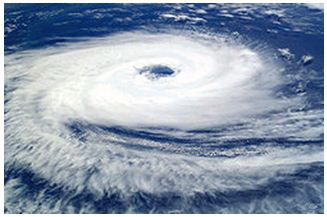A tropical cyclone is characterized by a large low-pressure center and numerous thunderstorms that produce strong winds and heavy rain. Tropical cyclones are formed when moist air rises, resulting in condensation of water vapor contained in the moist air.
While tropical cyclones can produce extremely powerful winds and torrential rain, they are also able to produce high waves and damaging storm surge as well as spawning tornadoes. They develop over large bodies of warm water, and lose their strength if they move over land. This is why coastal regions can receive significant damage from a tropical cyclone, while inland regions are relatively safe from receiving strong winds. Heavy rains, however, can produce significant flooding inland, and storm surges can produce extensive coastal flooding up to 40 kilometers from the coastline.




